White-Beaked Dolphins in Iceland: Where, When, and Why to Spot Them
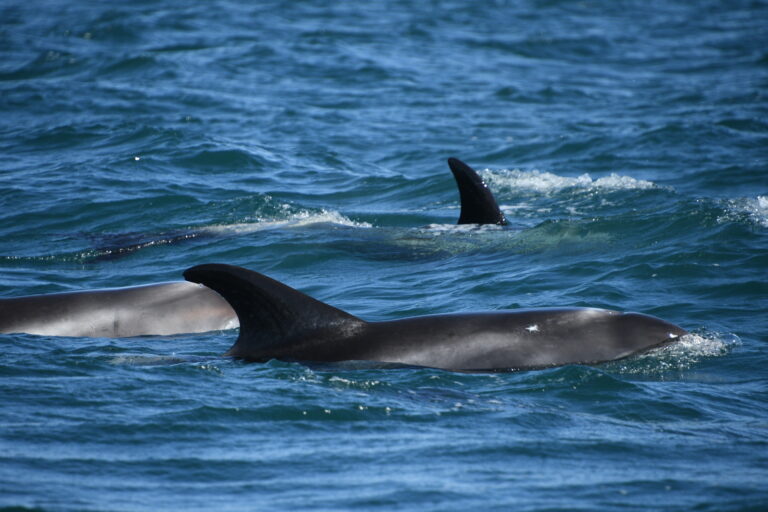
Here in Iceland, we’re blessed with so much biodiversity in our waters. Among the most energetic and charismatic are the white-beaked dolphins – a species you’re likely to encounter on one of our tours if you’re lucky!
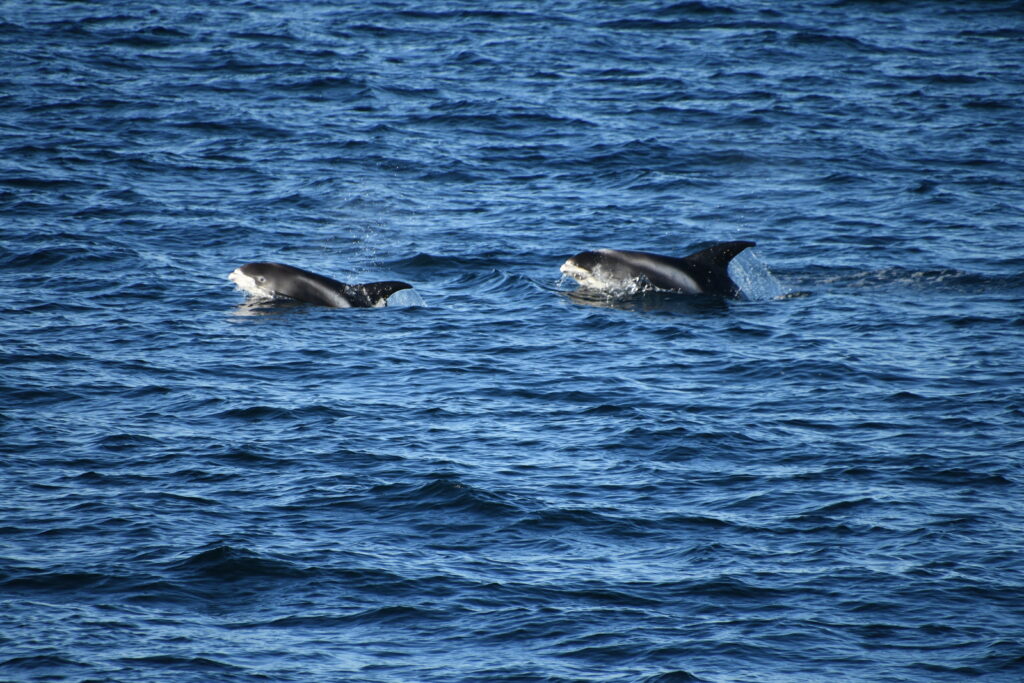
As the 7th biggest dolphin in the world, white-beaked dolphins can grow up to 3m in length and weigh up to 350 kg. Their robust size helps them thrive in the cold, subpolar waters of the North Atlantic. These dolphins are endemic to this ocean, meaning they’re only found in specific areas: eastern North America, northern Europe, Greenland, Iceland and the UK. With a population of around 100,000 to 300,000 individuals, they’re considered relatively abundant compared to many marine mammals, some of which face severe risks of extinction.
Faxafloi Bay, where our tours take place, is a perfect habitat for these dolphins. They prefer waters less than 200 m deep, and here in the bay, it doesn’t get deeper than 60 m! As a toothed whale, white-beaked dolphins use echolocation to find their prey! This is where they use sound waves (specifically clicks and whistles) that bounce off their prey and other objects, allowing the dolphin to pick up the echo and see what’s in their surroundings. They also use these sound waves for communicating with one another, especially calves and mothers. Studies have shown that these whistles can be used at distances of up to 10.5 km!
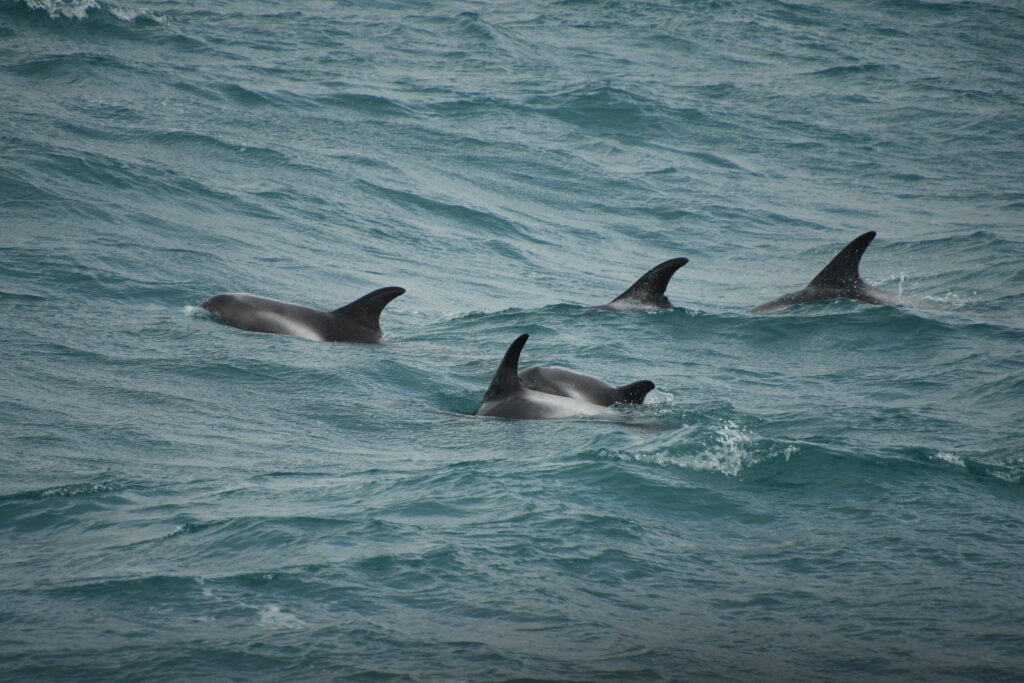
Their diet includes schooling fish like haddock, cod, and herring, as well as crustaceans and squid. With 22–28 pairs of cone-shaped teeth, they snatch up prey and swallow it whole. Toothed whales also live in pods, so they use this to their advantage working cooperatively to herd the fish together into bait balls. Like most other species of dolphins, white-beaked dolphins can live in pods of 5-30 individuals, and can be seen in megapods of up to 1,500! Amongst the smaller pods, dolphins will form same-sex groups – male groups are called “alliances,” and female groups are “parties.”
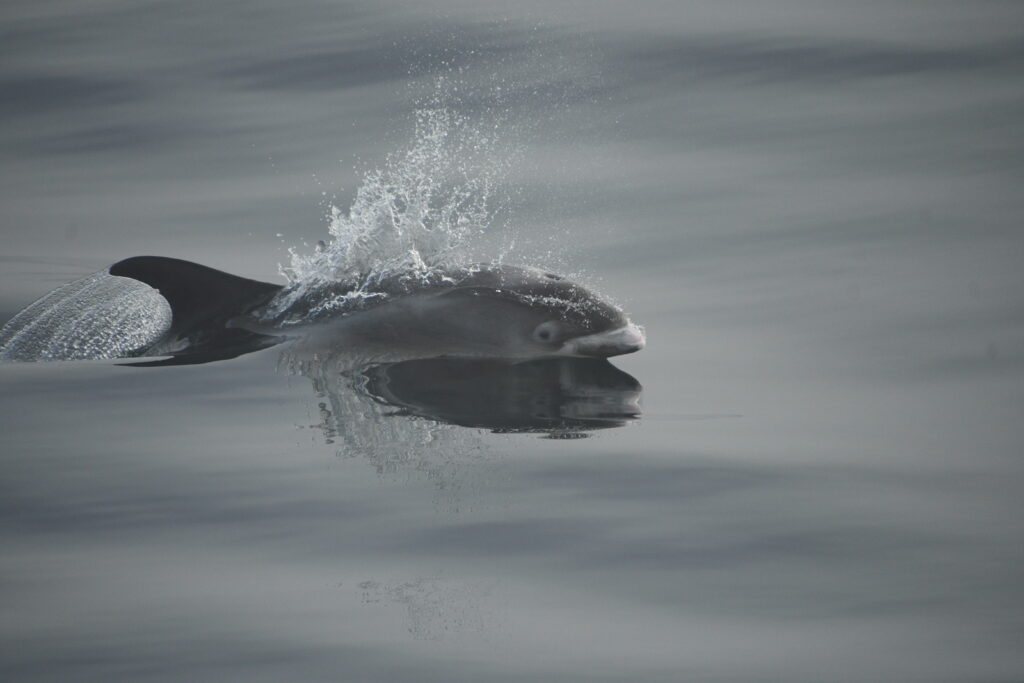
Despite their name, not all white-beaked dolphins have white beaks—some are grey or pink! Their Latin name, Lagenorhynchus albirostris, means “white beak,” though they’re more easily identified by their distinct colour pattern: black, grey, and white, with a tall dorsal fin and a white saddle patch behind it, much like killer whales. They also have this beautiful white/grey banding along their flank! There is also quite a bit of variation in colour depending on their age. Juveniles and calves can have some speckling, as well as a semi-circular head blaze and a lateral patch! As they mature, they lose their speckling. Males tend to be larger than females, a common trait among toothed whales.
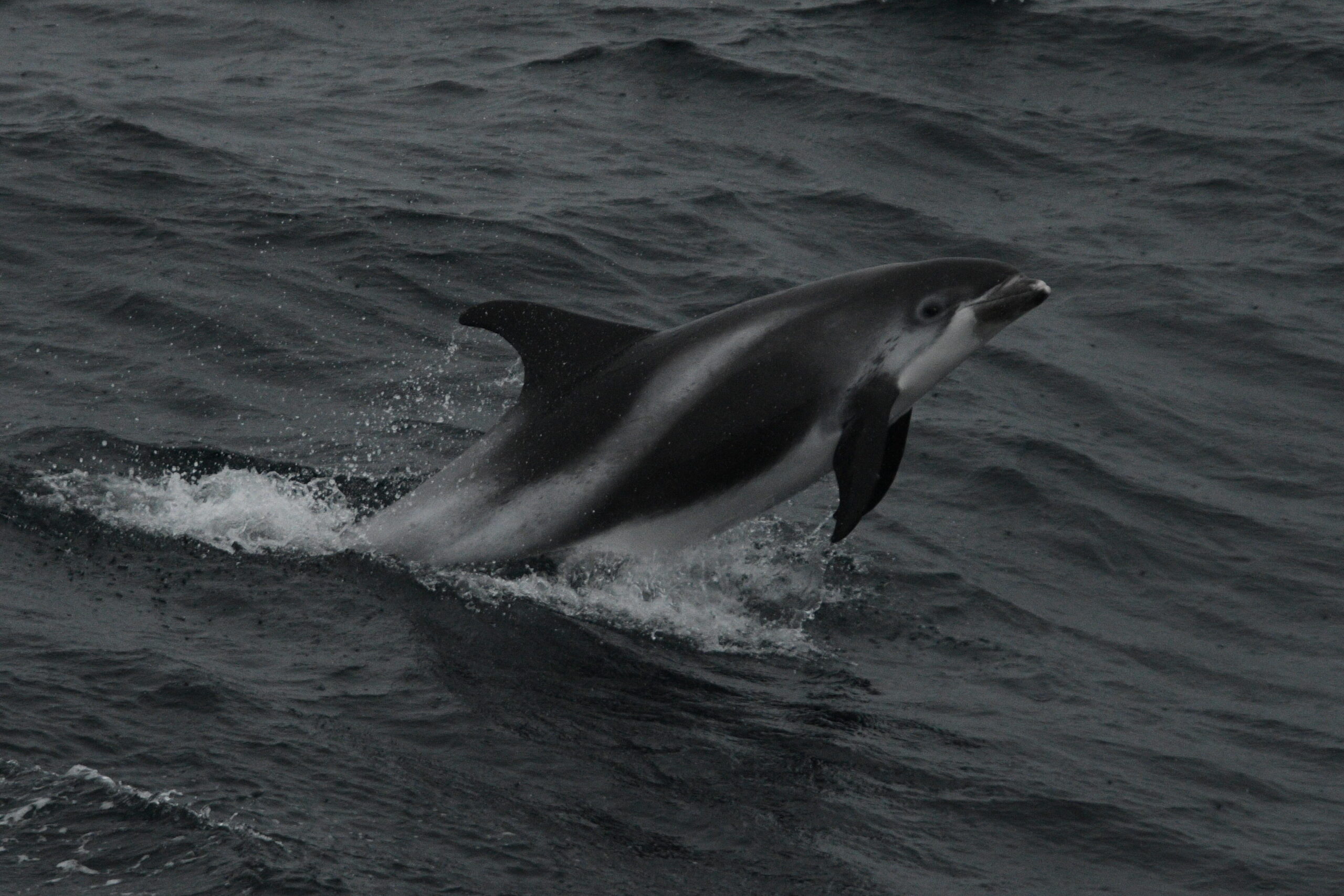
There is still a lot to learn about White-Beaked Dolphins in Iceland
We’re still learning a lot about these dolphins, including their full lifespan, which is currently estimated at around 30 years. Females reach maturity between 6–10 years, males a bit later at 8–12, and pregnancies last about 11 months. Newborn calves weigh around 40 kg and measure about 1 meter. Mothers nurse their young for 2–12 months, teaching them to hunt as they grow more independent. When you’re fortunate to come across a mother and calf pair, you will often notice how energetic the calves are! They love porpoising, jumping and swimming right near the boat! White-beaked dolphins are fast swimmers and frequent breachers, often bow-riding and surfing along the wake of boats.
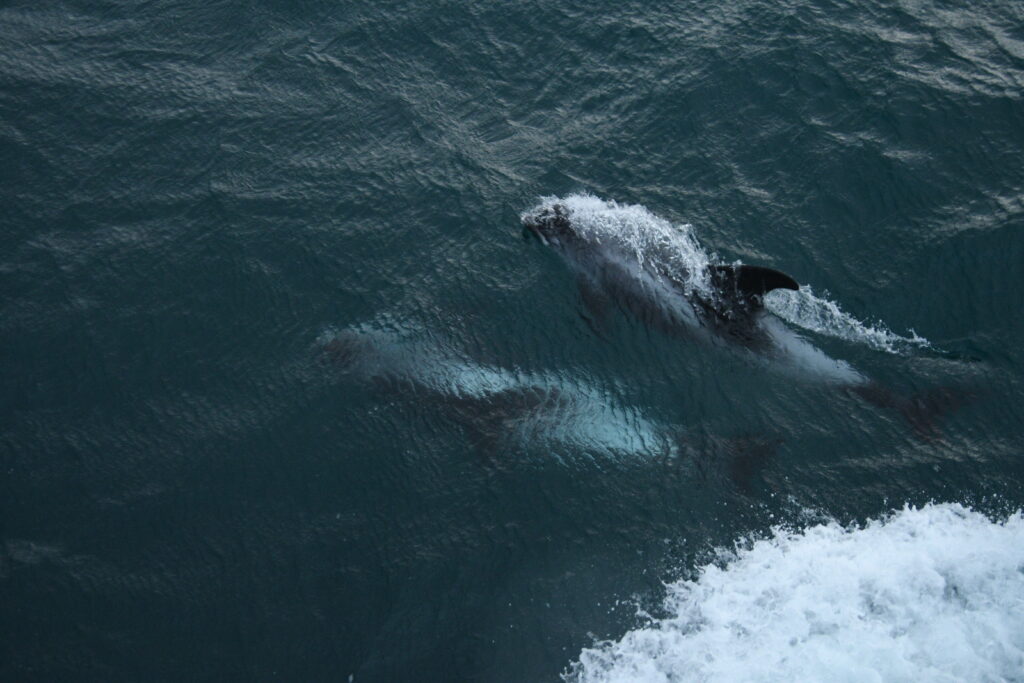
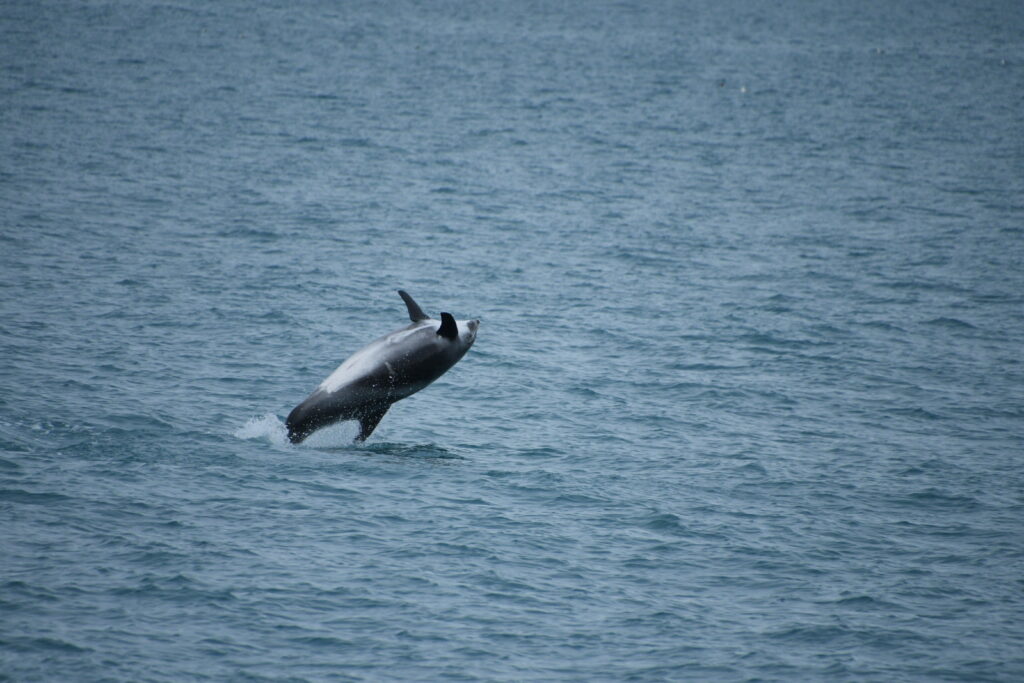
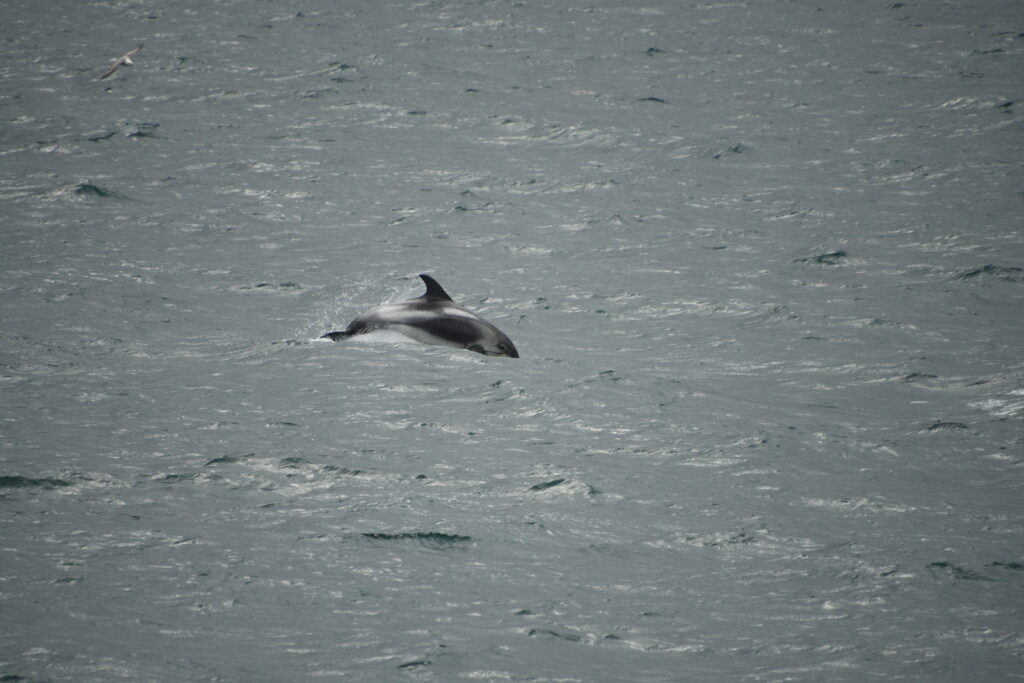
a) Two dolphins bow-riding under the boat, b) a dolphin breaching, and c) a calf jumping, all taken on-board by Rebecca Roberts
Unlike our slower baleen whales, dolphins like to travel around a lot more, and one study found that they can travel up to 5,000 km in 201 days! That’s like driving the ring-road around Iceland 5 times! Even though they travel a lot, these dolphins don’t really migrate like our baleen whales do. They do, however, like to move between the north and south between summer and winter. As they´re very social and curious, they like to associate themselves with other species. During summer, we often observe white-beaked dolphins interacting with humpback whales – sometimes even playfully annoying them!
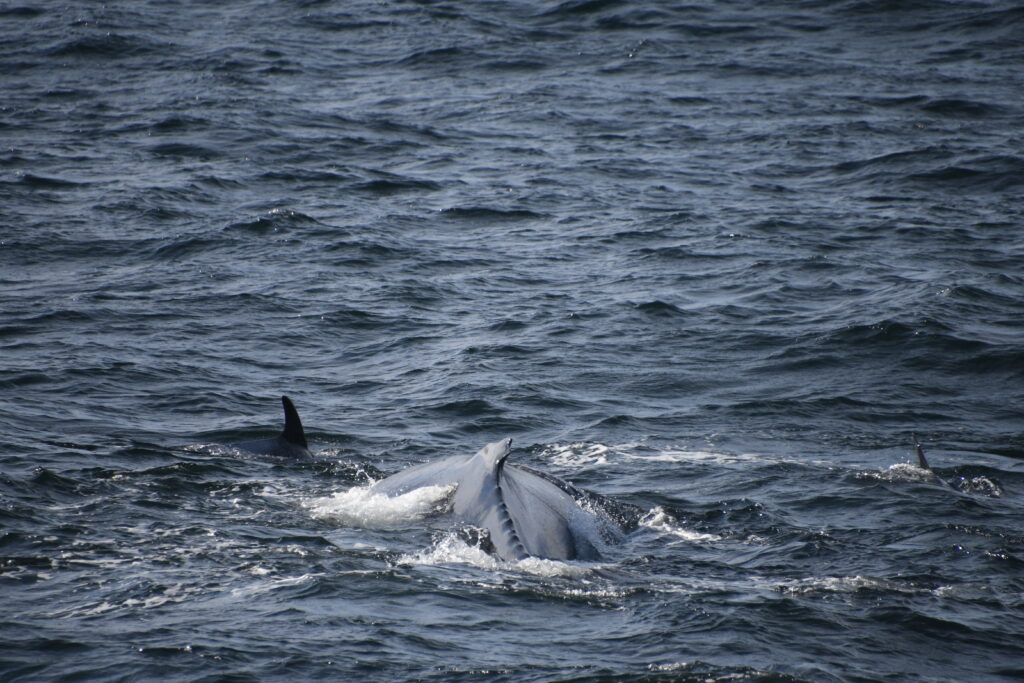
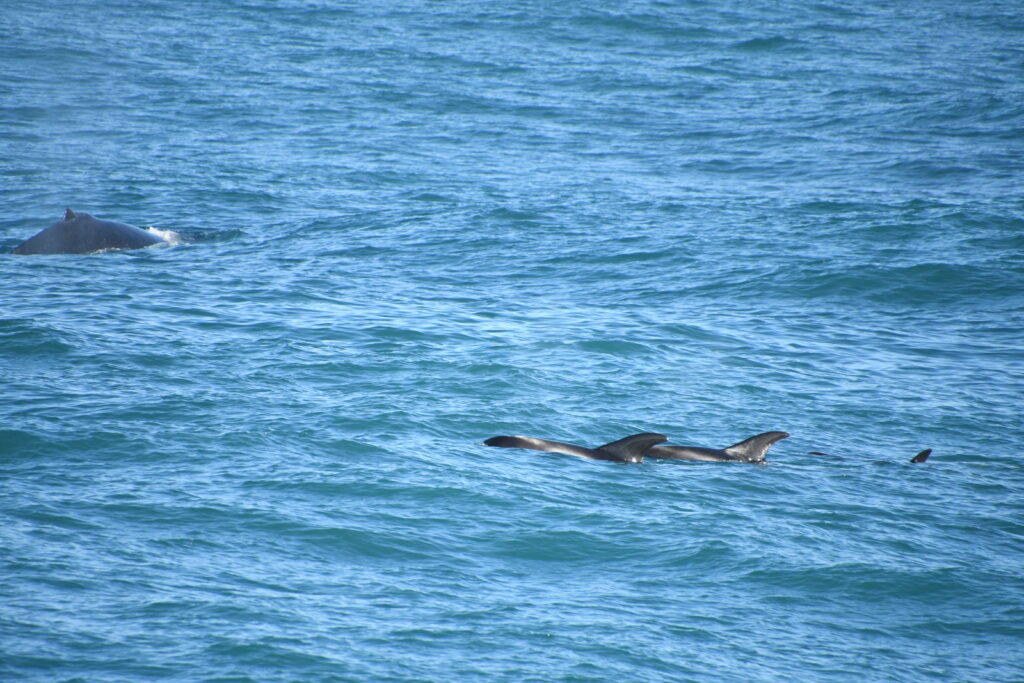
Two interactions of white-beaked dolphins and humpback whales in our bay, taken on-board by Rebecca Roberts
Despite their playful nature and healthy population, white-beaked dolphins are still at risk. Bycatch – getting entangled in fishing gear like gillnets, cod traps, and trawl nets – can cause severe injuries or even death. And as underwater noise pollution increases, their ability to communicate and navigate is threatened, leading to disorientation, separation, and even strandings.
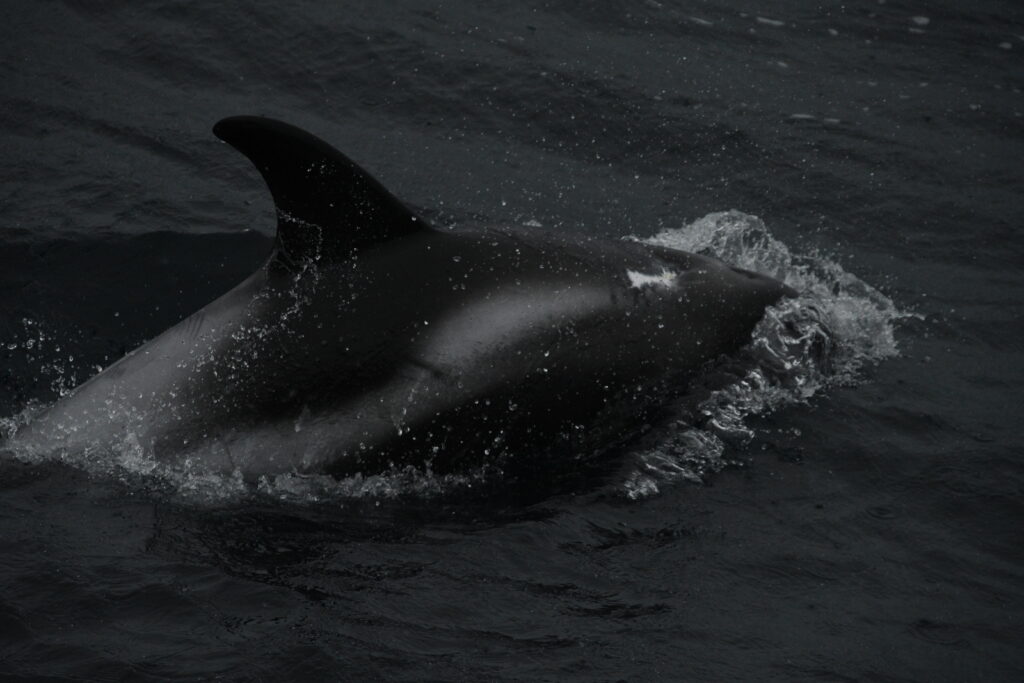
That’s why education, conservation, and responsible tourism are more important than ever. By choosing sustainable whale watching tours like ours, you’re supporting ongoing efforts to study and protect marine wildlife like the white-beaked dolphin. Every sighting is a reminder of how fortunate we are to share our waters with these incredible animals—and how important it is to ensure they remain part of Iceland’s rich biodiversity for generations to come.
Ready to meet them for yourself? Join us on a tour and witness their wild, playful spirit firsthand.
By Rebecca Roberts

